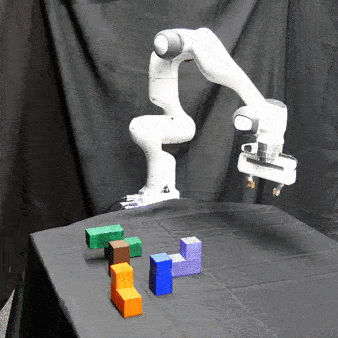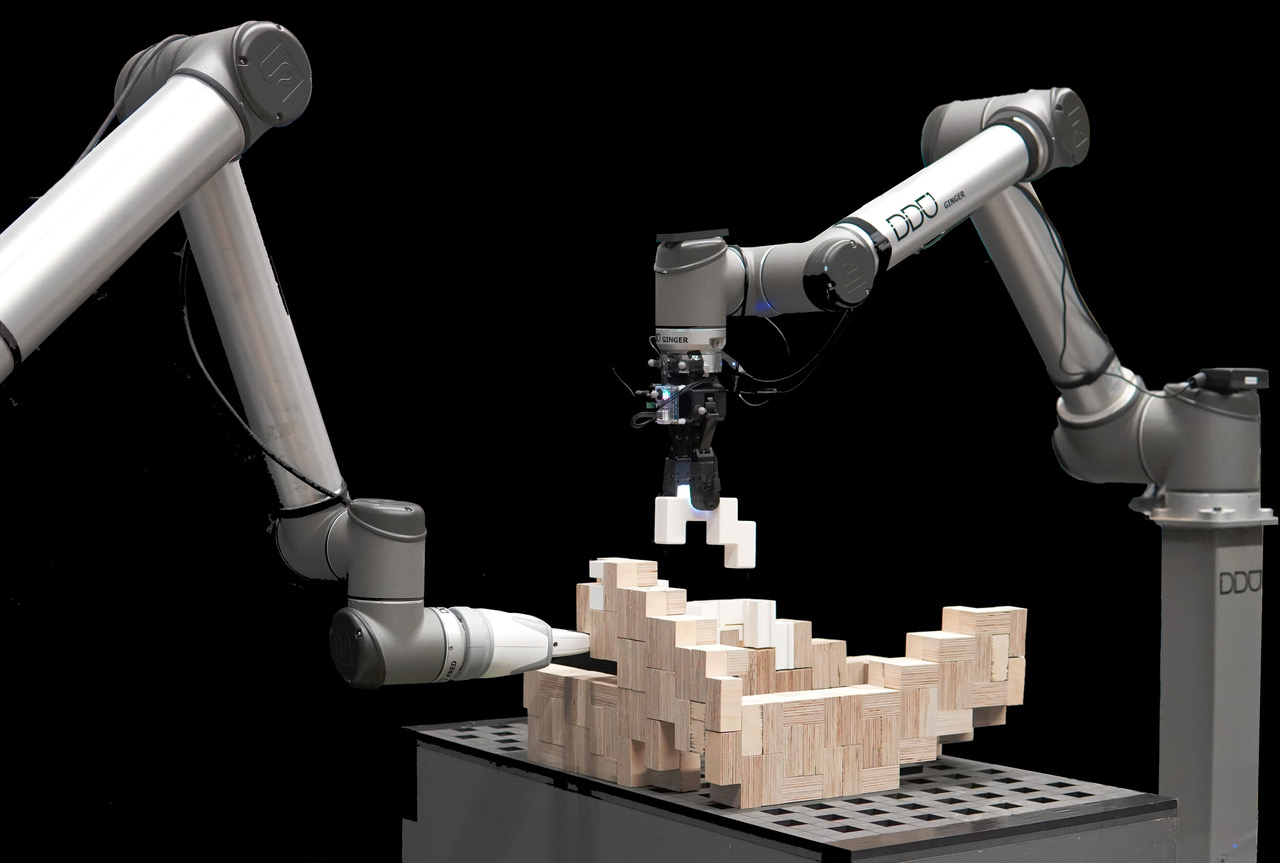Dexterous Manipulation
Our Robot Learning Laboratory is at the forefront of advancing dexterous manipulation, a critical area that enables robots to perform complex tasks with agility and precision akin to human hands. We are particularly focused on innovative skill learning approaches that meld the strengths of imitation learning and reinforcement learning. This hybrid strategy allows our robots to not only mimic complex human actions but also improve their performance through trial and error, leading to more nuanced and adaptable manipulative skills. On a higher level, we delve into the intricate combinatorial optimization problems associated with sequential assembly involving multiple parts. This research aims to equip robots with the capability to plan and execute a series of actions, manipulating and assembling various components in an efficient and intelligent manner, thereby pushing the boundaries of what automated systems can achieve in dynamic and unpredictable environments.
Robotic Assembly
Graph-based Reinforcement Learning meets Mixed Integer Programs: An application to 3D robot assembly discovery

Robot assembly discovery (RAD) is a challenging problem that lives at the intersection of resource allocation and motion planning. The goal is to combine a predefined set of objects to form something new while considering task execution with the robot-in-the-loop. In this work, we tackle the problem of building arbitrary, predefined target structures entirely from scratch using a set of Tetris-like building blocks and a robotic manipulator. Our novel hierarchical approach aims at efficiently decomposing the overall task into three feasible levels that benefit mutually from each other. On the high level, we run a classical mixed-integer program for global optimization of block-type selection and the blocks’ final poses to recreate the desired shape. Its output is then exploited to efficiently guide the exploration of an underlying reinforcement learning (RL) policy. This RL policy draws its generalization properties from a flexible graph-based representation that is learned through Q-learning and can be refined with search. Moreover, it accounts for the necessary conditions of structural stability and robotic feasibility that cannot be effectively reflected in the previous layer. Lastly, a grasp and motion planner transforms the desired assembly commands into robot joint movements. We demonstrate our proposed method’s performance on a set of competitive simulated RAD environments, showcase real world transfer, and report performance and robustness gains compared to an unstructured end-to-end approach.
-
- Funk, N.; Menzenbach, S.; Chalvatzaki, G.; Peters, J. (2022). Graph-based Reinforcement Learning meets Mixed Integer Programs: An application to 3D robot assembly discovery, IEEE/RSJ International Conference on Intelligent Robots and Systems (IROS).
Reinforcement Learning and Tactile Sensing for Robotic Assembly

Construction is an industry that could benefit significantly from automation, yet still relies heavily on manual human labor. Thus, we investigate how a robotic arm can be used to assemble a structure from predefined discrete building blocks autonomously. Since assembling structures is a challenging task that involves complex contact dynamics, we propose to use a combination of reinforcement learning and planning for this task. In this work, we take a first step towards autonomous construction by training a controller to place a single building block in simulation. Our evaluations show that trial-and-error algorithms that have minimal prior knowledge about the problem to be solved, so called model-free deep reinforcement learning algorithms, can be successfully employed. We conclude that the achieved results, albeit imperfect, serve as a proof of concept and indicate the directions for further research to enable more complex assemblies involving multiple building elements.
-
- Belousov, B.; Wibranek, B.; Schneider, J.; Schneider, T.; Chalvatzaki, G.; Peters, J.; Tessmann, O. (2022). Robotic Architectural Assembly with Tactile Skills: Simulation and Optimization, Automation in Construction, 133, pp.104006.
